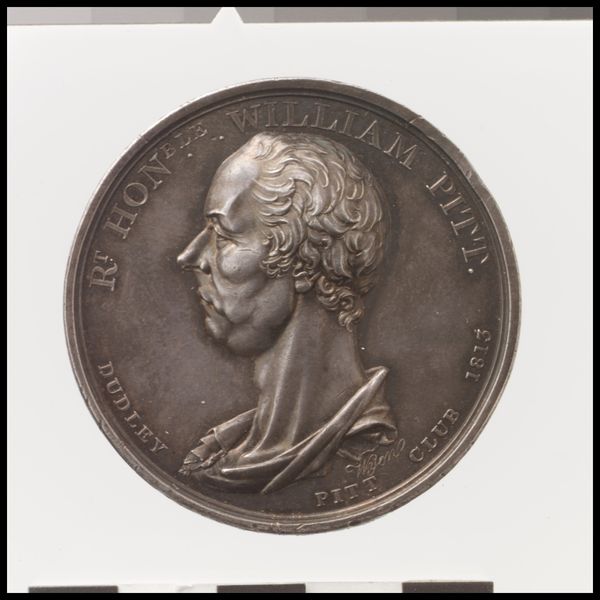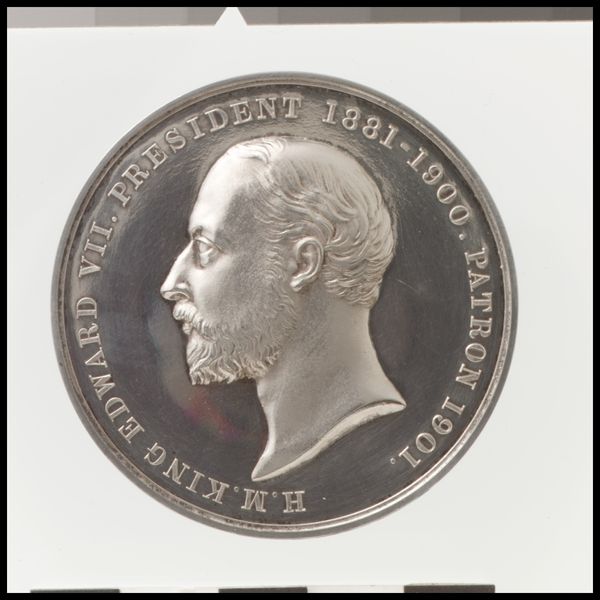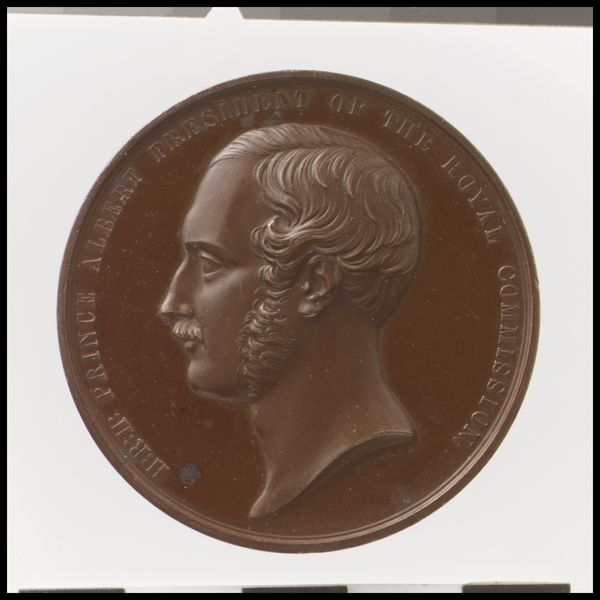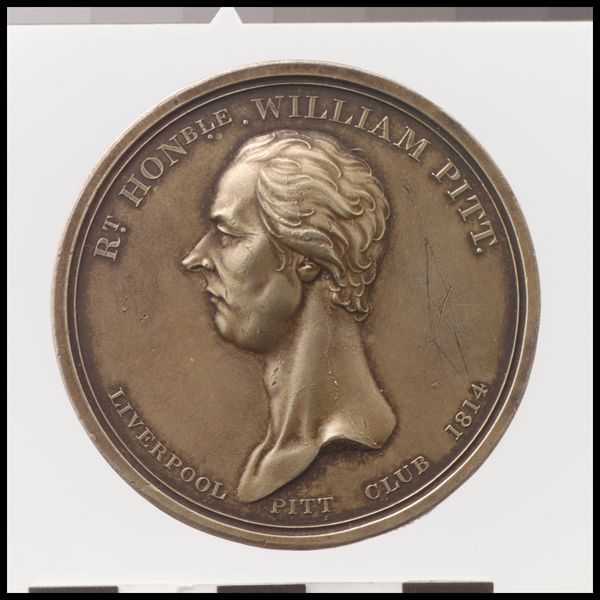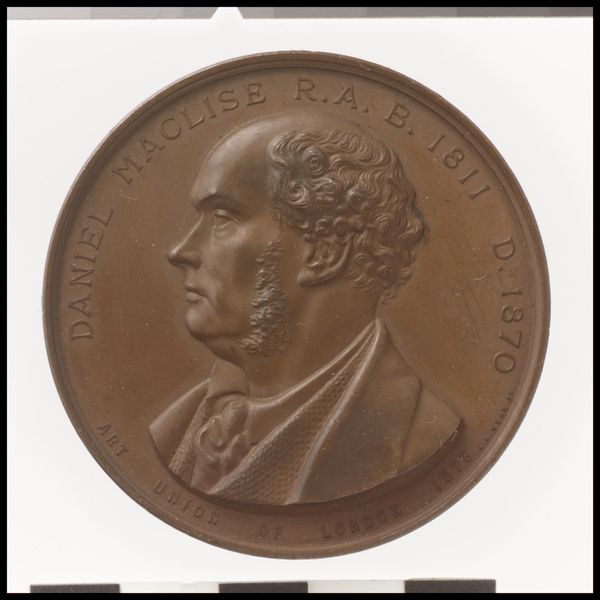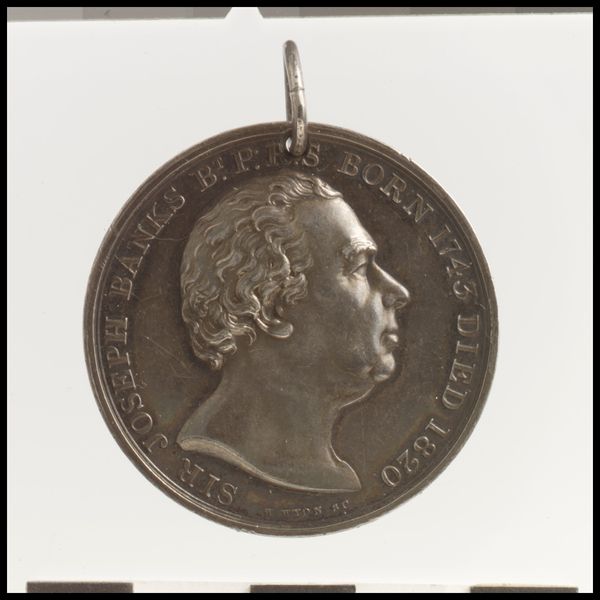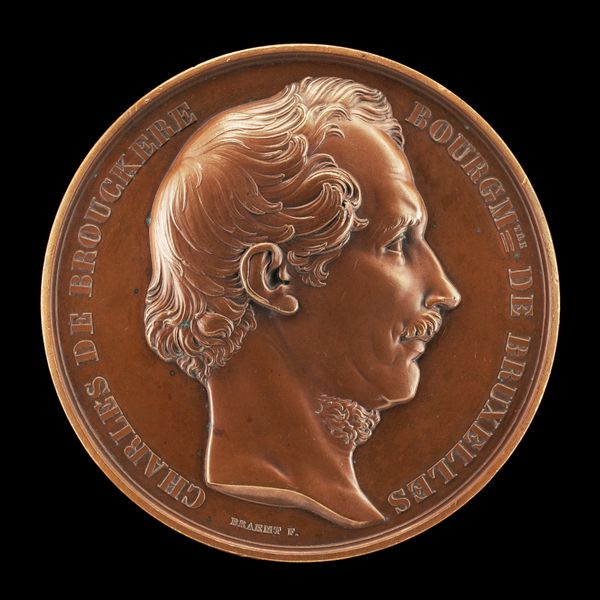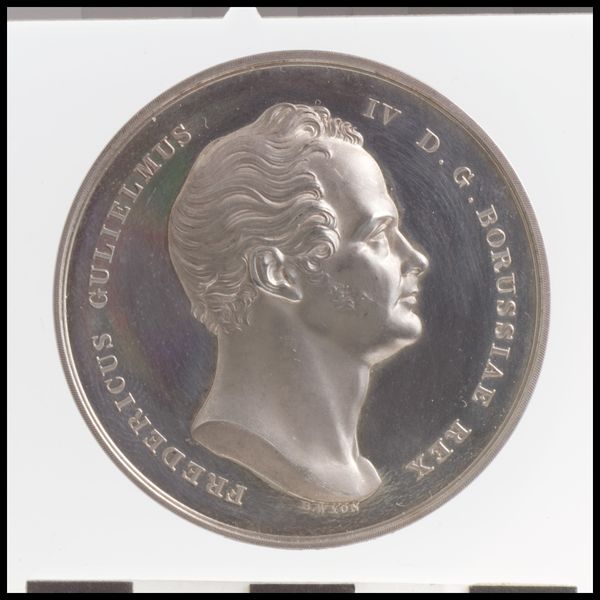
metal, relief, sculpture
#
portrait
#
medal
#
neoclacissism
#
metal
#
sculpture
#
relief
#
sculpture
#
decorative-art
#
profile
Dimensions: Diameter: 2 1/8 in. (54 mm)
Copyright: Public Domain
Curator: This metal relief sculpture, titled "Sir Francis Chantrey," was created in 1846 by William Wyon, and it now resides at the Metropolitan Museum of Art. It's a striking Neoclassical portrait medal. What's your first impression? Editor: Stark. Severe, even. The metallic sheen combined with the profile portrait gives it a sense of cold authority, almost Roman in its gravitas. Curator: That's a great observation. As a medal, this object would have served multiple purposes. Certainly commemorating Chantrey, who was himself a noted sculptor, but also participating in the broader culture of recognition within artistic and scientific circles. I’m curious about how its creation intersects with the labor of the mint and the economic systems supporting these artistic endeavors. Editor: And the choice of imagery is potent. The profile itself immediately invokes the classical world, echoing coins of emperors and philosophers. His balding head and severe expression suggests wisdom, discipline... perhaps a hint of the struggles inherent in the creative process. It's loaded with symbols of achievement. Curator: Interesting. I find the materiality just as compelling. The precision of the relief speaks to advanced techniques in metalworking and die-cutting. Consider the labour that went into creating the die! Moreover, such items often functioned within elaborate systems of patronage and exchange. The very material, the metal itself, carries an inherent value. Editor: True. And beyond the intrinsic value, there's the conferred status. A medal like this serves as a potent symbol of recognition. It carries cultural weight beyond the individual portrait. The act of awarding it elevates both giver and receiver. The visual language cements a certain cultural narrative of artistic excellence. Curator: Precisely. Reflecting on it, I'm drawn to how it encapsulates the relationship between the artist, the patron, and the wider social value placed on artistic skill within Victorian society. Editor: For me, the artwork’s evocative imagery creates an enduring monument to artistic legacy, sparking thoughts about the nature of fame and the cultural stories we choose to tell through symbols.
Comments
No comments
Be the first to comment and join the conversation on the ultimate creative platform.
